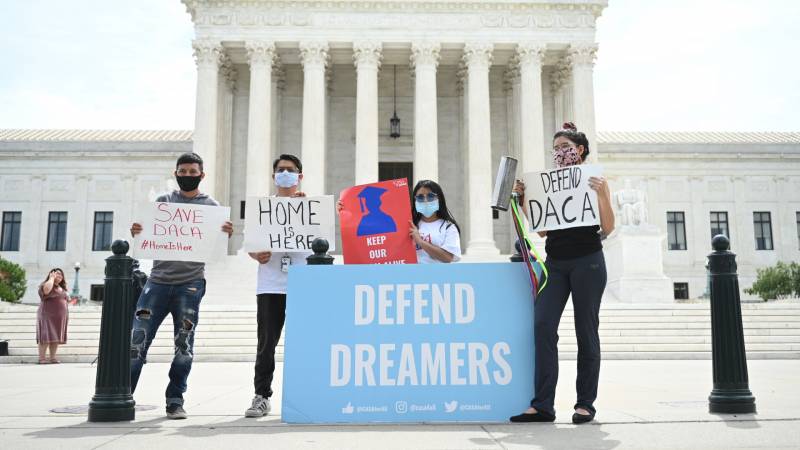The Supreme Court of the United States issued a 5-4 ruling today upholding the legality of Deferred Action for Childhood Arrivals program. The program allows immigrants who arrived in the country as children — but don’t have permanent legal status or a path to legal status — to receive protection from deportation and permission to work. For the past eight years, around 800,000 people have participated in DACA, working in what are now deemed essential jobs: helping feed the nation, caring for coronavirus patients, and serving in the military. The Obama-era program had been in limbo since 2017, when President Donald Trump announced he was ending the program and called it illegal. The program, which some studies suggest was hugely popular with Americans, can now remain in place. We discuss the decision and what could happen next for immigration reform.
Supreme Court Rules to Keep DACA in Place
52:47

Deferred Action for Childhood Arrivals (DACA) demonstrators stand outside the US Supreme Court in Washington, DC, on June 15, 2020. (JIM WATSON/AFP via Getty Images)
Guests:
Tyche Hendricks, senior editor covering immigration, KQED
Deep Gulasekaram, professor of law, Santa Clara University School of Law
Dulce Garcia, DACA recipient; immigration attorney and director, Border Angels
Jessica Vaughan, director of policy studies, Center for Immigration Studies
Sarah Souza, DACA recipient; president, San Francisco Latino Democratic Club
Sponsored